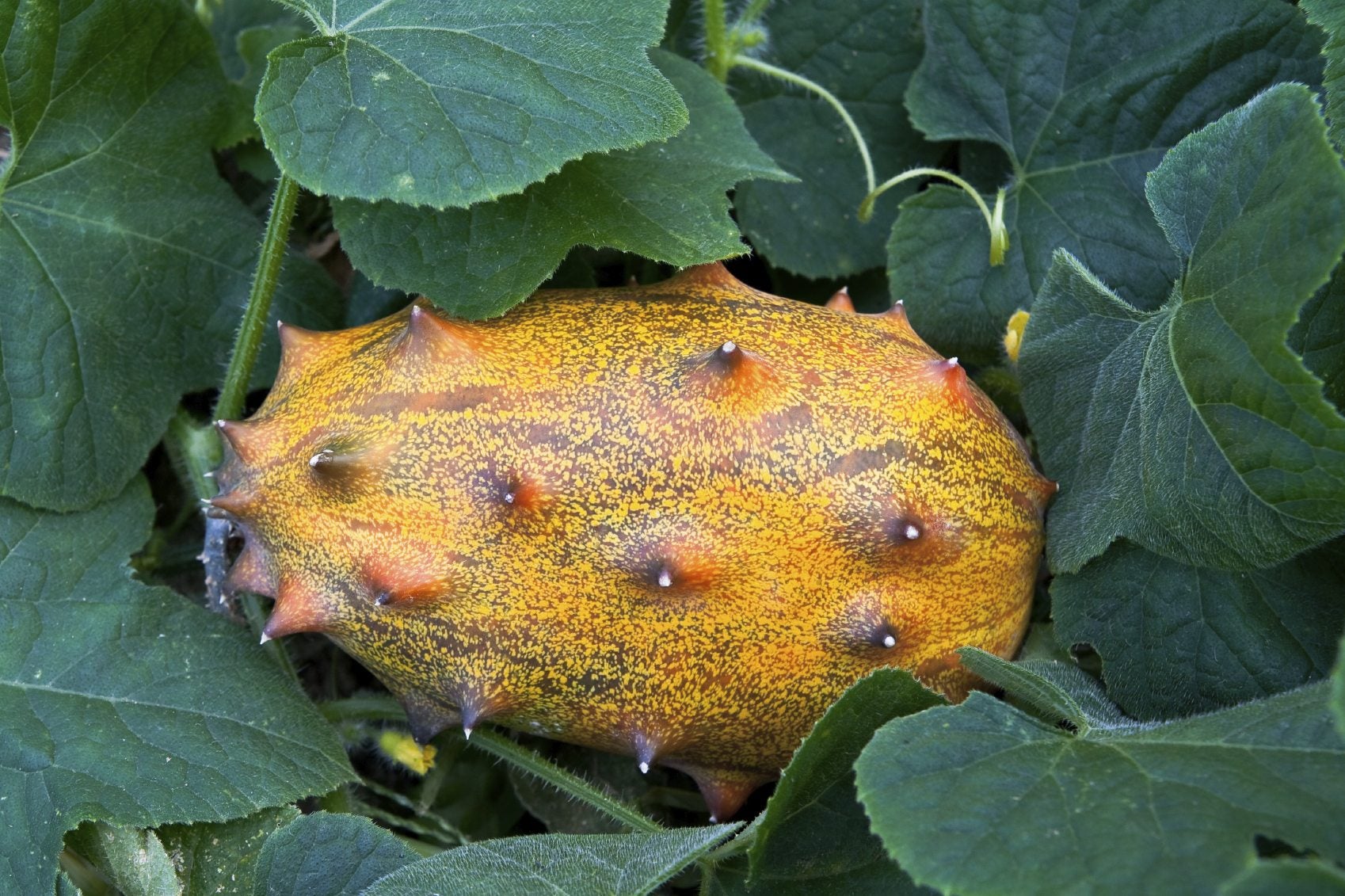Jelly Melon Plant Info – Learn How To Grow Kiwano Horned Fruit


Also known as jelly melon, Kiwano horned fruit (Cucumis metuliferus) is an odd-looking, exotic fruit with a spiky, yellow-orange rind and jelly-like, lime-green flesh. Some people think the flavor is similar to a banana, while others compare it to lime, kiwi or cucumber. Kiwano horned fruit is native to the hot, dry climates of central and southern Africa. In the United States, jelly melon growing is suitable in USDA plant hardiness zones 10 and above.
How to Grow Kiwano
Kiwano horned fruit performs best in full sunlight and well-drained, slightly acidic soil. Prepare the soil ahead of time by digging in a few inches of manure or compost, as well as an application of balanced garden fertilizer. Plant kiwano horned fruit seeds directly into the garden after all danger of frost has passed and temperatures are consistently above 54 F. (12 C.). Optimum temperatures for germination are between 68 and 95 F. (20-35 C.). Plant seeds at a depth of ½ to 1 inch, in groups of two or three seeds. Allow at least 18 inches between each group. You can also start the seeds indoors, then plant the young jelly melon plants in the garden when the seedlings have two true leaves and temperatures are consistently above 59 F. (15 C.). Water the area immediately after planting, then keep the soil slightly moist, but never soggy. Watch for the seeds to germinate in two to three weeks, depending on temperature. Be sure to provide a trellis for the vine to climb, or plant the seeds next to a sturdy fence.
Caring for Jelly Melons
Growing a jelly melon plant is much like caring for cucumbers. Water jelly melon plants deeply, providing 1 to 2 inches of water per week, then allow the soil to dry between waterings. A single weekly watering is best, as shallow, light irrigation creates short roots and a weak, unhealthy plant. Water at the base of the plant, if possible, as wetting the foliage places the plants at higher risk of disease. Cut back on watering as the fruit ripens to improve the flavor of the kiwano fruit. At this point, it’s best to water lightly and evenly, as excessive or sporadic watering may cause the melons to split. When temperatures are consistently above 75 F. (23-24 C.), the jelly melon plants benefit from a 1-2 inch layer of organic mulch, which will conserve moisture and keep weeds in check. And there you have it. Jelly melon growing is that easy. Give it a try and experience something different and exotic in the garden.
Gardening tips, videos, info and more delivered right to your inbox!
Sign up for the Gardening Know How newsletter today and receive a free copy of our e-book "How to Grow Delicious Tomatoes".

A Credentialed Garden Writer, Mary H. Dyer was with Gardening Know How in the very beginning, publishing articles as early as 2007.
-
 4 Superfast Composting Methods: Turn Waste Into Garden Gold In 30 Days Or Less
4 Superfast Composting Methods: Turn Waste Into Garden Gold In 30 Days Or LessTry the fastest composting methods to turbocharge your pile and transform kitchen scraps and garden waste into finished compost in just a few weeks.
By Mary Ellen Ellis
-
 Best Spider Plant Soil – Complete Soil Guide And Expert Tips For Keeping Plants Happy
Best Spider Plant Soil – Complete Soil Guide And Expert Tips For Keeping Plants HappySpider plants are fun and easy plants to grow, but what is the best soil for a spider plant? Selecting the right soil is important so they can thrive.
By Bonnie L. Grant